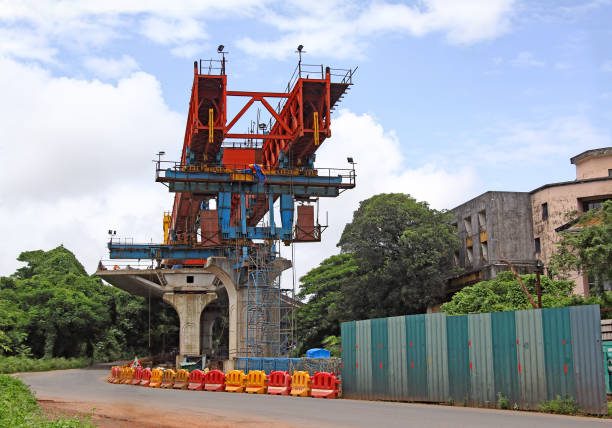The Department for Transport (DfT) could bring forward several delayed road schemes using the £1bn earmarked for future smart motorway construction. The confirmation that all new all-lane running (ALR) schemes are now scrapped was delivered over the weekend, following years of debate about their safety. National Highways maintained the view that they are “our safest roads” but road bodies such as the AA and the RAC continually voiced opposition, reflecting concerns of drivers that they did not feel safe while using them. The decision to scrap all new smart motorways schemes means that 11 paused schemes and three more that had been earmarked for Roads Investment Strategy 3 (RIS3), between 2025 to 2030, will no longer go ahead. This potentially frees up £1bn of funding in the short term and allows more headroom in National Highways and the DfT’s ongoing planning for what will be in the RIS3 envelope. The AA has called for existing smart motorways to be converted back to having a permanent hard shoulder. This would involve painting over the dotted line of the inside lane to make it solid and demarking the lane as a hard shoulder by inserting red Xs in overhead gantries. Similarly, the RAC has suggested that “converting all lane running stretches to the ‘dynamic hard shoulder’ configuration, where the hard shoulder is open and closed depending on the levels of traffic, could be one option the government considers”. However, the government is unlikely to spend the money this way as it is only scrapping new smart motorways and is currently completing two more that are over 75% constructed. In its announcement, the government said that the decision – which was driven by prime minister Rishi Sunak – to cancel new smart motorways “will allow more time to track public confidence in smart motorways over a longer period”, meaning it will continue to monitor the use of existing ALR motorways for a potential reinstatement of the programmer in the future. The government has maintained its commitment of £900M to continue improving the safety of existing smart motorways with more emergency refuge areas and improved stopped vehicle detection technology, so is not intended to transform them back any time soon. Instead, the money could go towards other new roads and upgrades. March this year saw the DfT announce the “rephrasing” of several major infrastructure projects as a means of managing tough economic headwinds. This saw Lower Thames Crossing, A27 Arundel Bypass, and A5036 Port of Liverpool Access Road pushed back from RIS2 (2020-2025) to RIS3. Pre-construction work for Lower Thames Crossing is ongoing as National Highways awaits a decision on its development consent order (DCO) application. However, with £1bn now back in its pocket, the DfT could consider bringing the other two forward again.

The A27 Arundel Bypass is an 8km New Dual Carriageway.
that splits from the current A27 and circumvents the town of Arundel before reconnecting to the current A27, which National Highways has described as a “crucial route”. The preferred route for the bypass was confirmed in 2020 and a consortium of Bam Nuttall, Aecom and Mace was awarded the main works contract in April 2021. At the time of the public consultation in November 2022, the forecast price for the scheme was at least £320M and work was expected to commence in 2023 or 2024. National Highways believes the scheme is important as it is the only strategic east-west route south of the M25, which could be reason to bring it forward once more. The A5036 Port of Liverpool access road, valued at £163M – £335M, has been controversial as it will see a new dual carriageway built down the middle of the Rimrose Valley country park and there have been calls for sustainable alternatives. Despite the controversy, National Highways has remained committed to the scheme as it is “an important investment in the strategic road network and economy of the city region and wider North West”, so it is possible that it might take the opportunity to advance it once again. Even with considerable cost pressures, these two schemes combined would still come in under £1bn and free up more space in the RIS3 portfolio. The RIS3 plan has now had three of its major projects removed, with the M1 North Leicestershire, M1 junctions 35a to 39 Sheffield to Wakefield and M6 junctions 19 to 21a Knutsford to Croft smart motorways all now scrapped. Roads bosses had previously admitted that there would be “very limited” headroom for new projects in RIS3 but that was prior to the decision to scrap future smart motorway scheme. The previous concern about other new roads projects was borne out in last month’s rephasing announcement, when it was revealed that new roads that had been earmarked for RIS3 “will continue to be developed and considered for inclusion within RIS4”, meaning they had been pushed back into the 2030 to 2035 timeframe. There had been 31 projects tipped for RIS3, including the three smart motorways, leaving 28 that could now potentially be brought back into the RIS3 envelope as its make up has not yet been confirmed.

Research Into and Assessment of the 28 Schemes Was Already.
underway before the announcement that they would be pushed back. The Dot’s objectives for RIS3 are to improve safety for all, improve environmental outcomes, improve network performance, grow the economy, manage and plan the strategic road network for the future and build a technology-enabled network. In deciding which schemes could be brought back into the RIS3 envelope, each scheme’s merits will be assessed in relation to these objectives. The decisions will be made between the Deft and National Highways, informed by statutory advice from the Office of Rail and Road. National Highways has set ambitious decarbonisation targets for itself, with the intention to reach net zero maintenance and construction by 2040 among them. It has so far trialled low carbon concrete and low carbon bio-asphalts in small areas, but further cash injection could accelerate further testing and roll out of these technologies and others. There is also an argument that the money should not be spent on new roads at all, following the example set by Wales. Transport Action Network roads and climate campaigner Rebecca Lush said: “Now the government has finally seen sense on smart motorways it should also put other large and outdated schemes out of their misery, such as the £10bn Lower Thames Crossing, the £2.5bn A303 Stonehenge tunnel and road through the World Heritage Site and the £1.5bn A66 Northern Trans Pennine. “The money saved should be invested instead in infrastructure that meets the government’s objectives to cut carbon, reduce traffic and achieve modal shift such as projects that increase rail freight and major public transport investment.” Reacting to the decision to scrap all new smart motorways, AA president Edmund King said: “Pressure has been mounting on the government to take decisive action on ‘smart’ motorways. We have been campaigning on this issue for over a decade and wrote to the prime minister on Good Friday pointing out that the ‘smart’ motorways experiment has failed. Drivers dislike them, the safety systems are far from perfect and one third (37%) of breakdowns on ‘smart’ motorways happen in live lanes which puts lives in danger. “We believe the time has come to permanently stop the roll-out and to make plans to re-instate the hard shoulder. We are delighted that the prime minister has taken decisive action to stop any future roll out of ‘smart’ motorways. We have had enough coroners passing down their deadly and heart-breaking judgements where the lack of a hard-shoulder has contributed to deaths. At last the government has listened and we are delighted to see the rollout of ‘smart’ motorways scrapped. “We are also grateful to tireless campaigners such as Meera Narran who despite her personal loss of her beautiful son, Dev, has continued to campaign on this issue.” RAC road safety spokesperson Simon Williams said: “This is a watershed announcement and a victory for everyone who has campaigned against these motorways that, by their design, put drivers in more danger should they be unlucky enough to break down on one. “Our research shows all lane running smart motorways are deeply unpopular with drivers so we’re pleased the government has finally arrived at the same conclusion. It’s now vitally important that plans are made for making the hundreds of existing miles of these types of motorway as safe as possible. The possibility of converting all lane running stretches to the ‘dynamic hard shoulder’ configuration, where the hard shoulder is open and closed depending on the levels of traffic, could be one option the government considers.”


Recent Comments